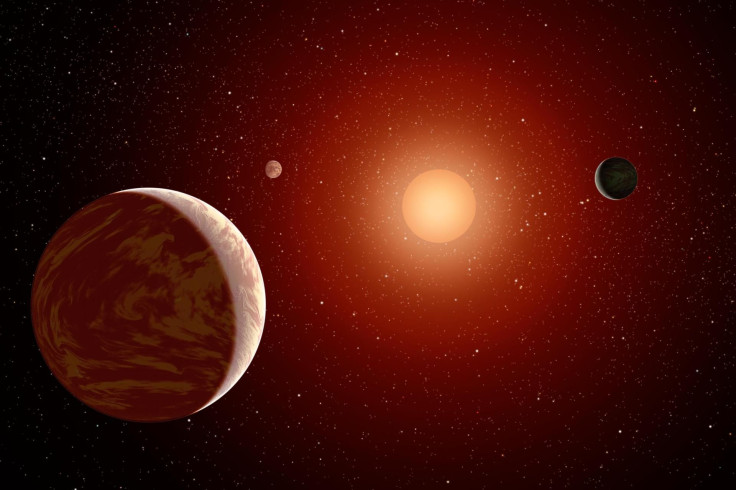New Planet Discovered: Alien 'Super-Jupiter' Orbits A Cool Star

Astronomers have found an alien planet that is nearly three times the size of Jupiter, the largest planet in our solar system.
With its massive size, a paper detailing the findings refers to the exoplanet, about 21,000 light years away from Earth, as a “super-Jupiter.”
Read: This Brown Dwarf Is the Biggest Star-Planet Hybrid We’ve Ever Seen
Despite the foreign gas giant being so much larger than the planets in our solar neighborhood, its star is significantly smaller than our own star, the Sun, measuring only about a third of the mass. The paper says that the exoplanet is orbiting tightly around a red dwarf star “likely located in the galactic bulge,” referring to the central part of the galaxy where stars are clustered together, as opposed to in the outer spirals, which is where we are located.
A red dwarf is the coolest star around — literally. This type of star gets its relatively low temperature from having such a small mass compared to other stars. With less fuel in its core, it does not burn as hot. But there’s a tradeoff: It also lives longer than more massive, hotter stars.
The new exoplanet’s name is a mouthful: MOA-2016-BLG-227Lb. An international team of scientists detected the planet last year and have been studying it since. According to a report, their findings are unique in how they came about: using a technique called “gravitational microlensing” that enables them to observe distant objects. It relies on one closer object’s gravity bending light like a lens, when it moves into a certain position between Earth and a farther object, and thus brightening the latter temporarily. The technique could help astronomers see, for example, a planet that is orbiting close to a faraway star.
In the case of this super-Jupiter, it orbits its red dwarf star at roughly the same distance as Mars when it reaches its farthest point from the Sun.
The scientists don’t yet know the radius of the planet or its star, nor how long it takes for the planet to complete one revolution around its host.
See also:
© Copyright IBTimes 2024. All rights reserved.





















